
Located in the heart of Bangkok, the capital and most populous city of Thailand, the spectacular Grand Palace is a complex of several dazzling buildings, of which the Dusit Maha Prasat Throne Hall and the Phra Maha Monthien were the earliest. The construction of the magnificent palace began on 6 May 1782, by the order of King Phutthayotta Chulalok, known as Rama I, when after seizing the crown from King Taksin of Thonburi, he decided to build a new capital city for the new Chakri Dynasty established by him. Accordingly, he shifted the seat of power from Thonburi, located on the west side of the Chao Phraya River,to the east side of Bangkok. By digging canals along the eastern side, the new capital city was turned into an artificial island, which was named Rattanakosin. The new palace was built on a rectangular site, on the west side of the island, with Wat Pho Buddhist temple complex to the south, Wat Mahathat Buddhist temple to the north, and River Chao Phraya on the west.
Throughout successive reigns, many new buildings and structures were added in the complex, and the Grand Palace had been the official residence, and the royal court of the Kings of Siam, later Thailand until 1925 when the Royal Family and the government had moved to other buildings. Finally, after the abolition of the absolute monarchy in 1932, all government agencies completely moved out of the palace. Today, the palace is used for hosting royal ceremonies, and welcoming State guests, and other foreign dignitaries.
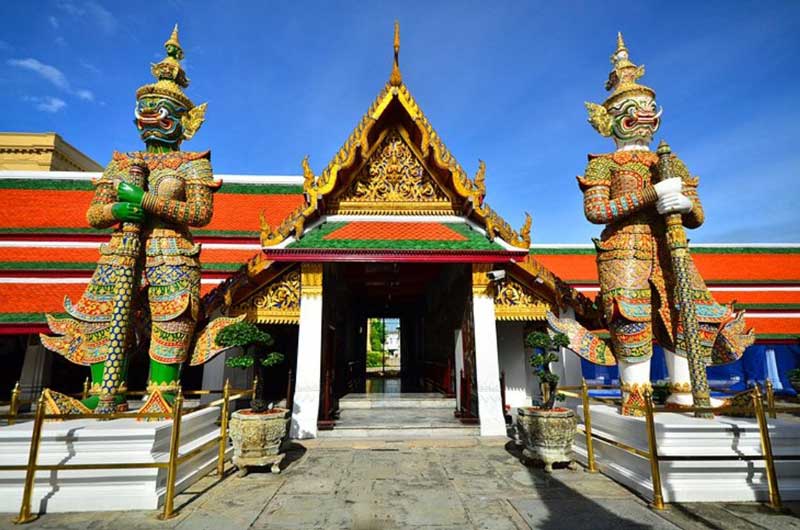
Separated by numerous walls and gates, the visually breathtaking and expansive Grand Palace is divided into three major areas. The Outer Court of the Grand Palace, located in the northwest of the palace, contains several state offices, including the Office of His Majesty’s Principal Private Secretary, the Bureau of the Royal Household, and the Office of the Royal Institute. However, the northeast part is occupied by the Temple of the Emerald Buddha, containing the idol of a sitting Buddha, carved of a single jade block and robed in a golden cloak.
The cloak is ceremoniously changed thrice a year by the king in a special celebration for the new season. The temple was named after the green colour of the jade from which the statue of Buddha was hewn. The temple contains some holy relics relating to the remnants of Lord Buddha and is guarded at the entrance by the Chinese demonic figures. It is said that the small statue of Lord Buddha was carved in Pataliputra in India, adjacent to modern-day Patna, although some say it originated in Burma, subsequently renamed Myanmar. According to another legendary story, the statue ensconced in plaster was discovered in 1434 in Chiang Rai, a city in northern Thailand, when a lightning bolt struck a package of artifacts exposing the lost Buddha.
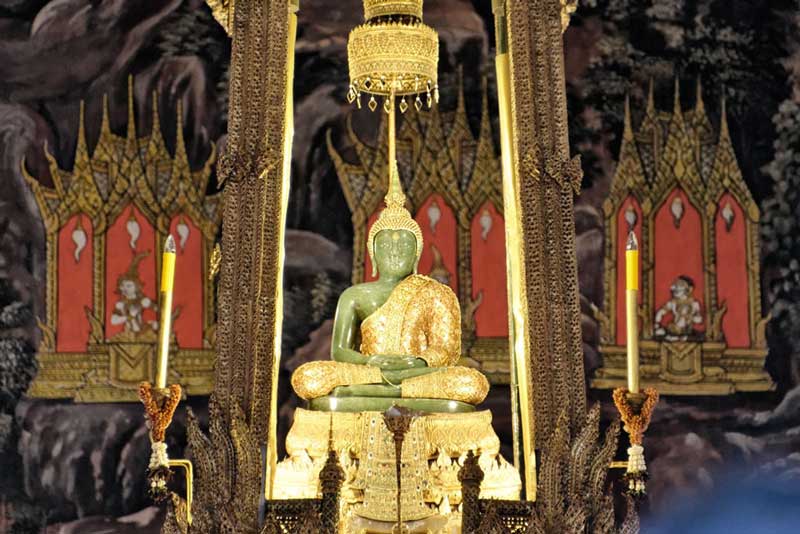
Initially, the Prasat Phra Debidorn building was designed to house the shrine of the Emerald Buddha. But finally, it was turned to contain the life-size statues of the kings of the Chakri dynasty.
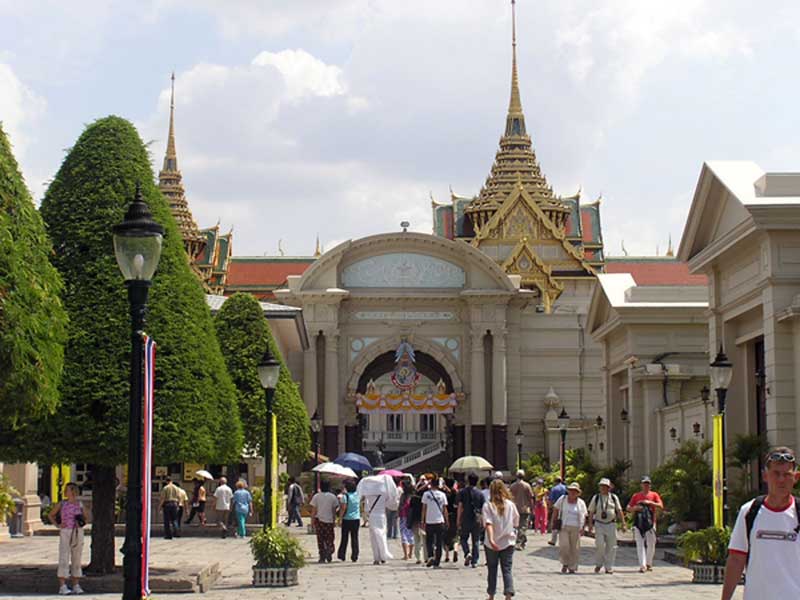
The Phimanchaisri Gate is the main portal from the Outer Court into the Middle Court and opens directly to the Chakri Maha Prasat Throne Hall. The Middle Court area contains the Phra Maha Monthien Buildings, the Chakri Maha Prasat Buildings, Phra Maha Prasant Buildings, and the Siwalai Gardens Quarter, while the Inner Court, at the south end of the complex, was a restricted area, reserved exclusively for females.
No man except for the king was allowed to enter into it, where lived the queens, consorts, daughters of the king, and boys under the age of puberty, along with several ladies-in-waiting and maids.
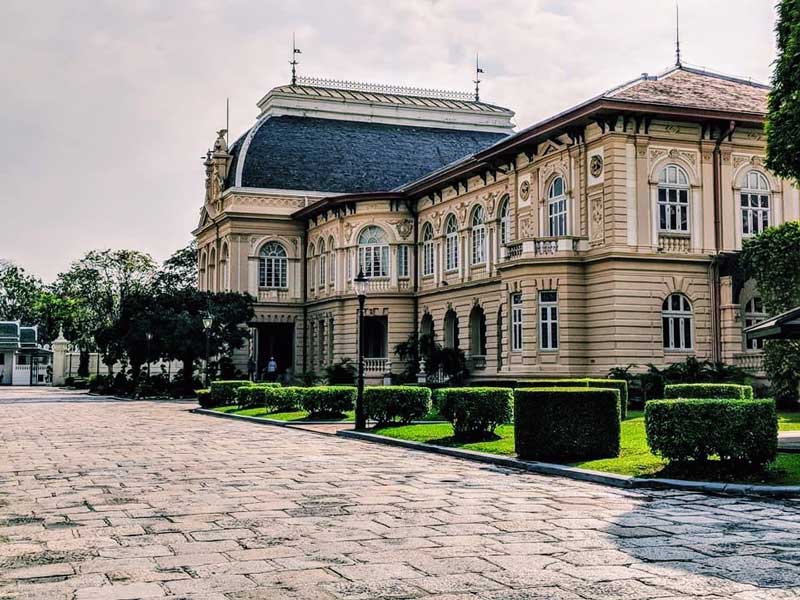
Among the numerous buildings in the vast complex of the Grand Palace, The Boromabiman Throne Hall, overlooking the lawns, was built by King Rama V, between 1897 and 1903. Designed and built under the supervision of a foreign architect, it was the first royal building in Thailand, equipped with a projecting portico where carriages could be pulled up directly to the door. A grand staircase leads up from the entrance to the reception room, featuring a vaulted ceiling capped with a skylight. Its interior frescos depict the four Hindu gods, namely Indra, Yama, Varuna, and Agni, believed to be the guardians of the universe. Once used to hold the king’s annual garden party, now it is occasionally used to accommodate the visiting heads of the state or the high-ranking Buddhist monks.
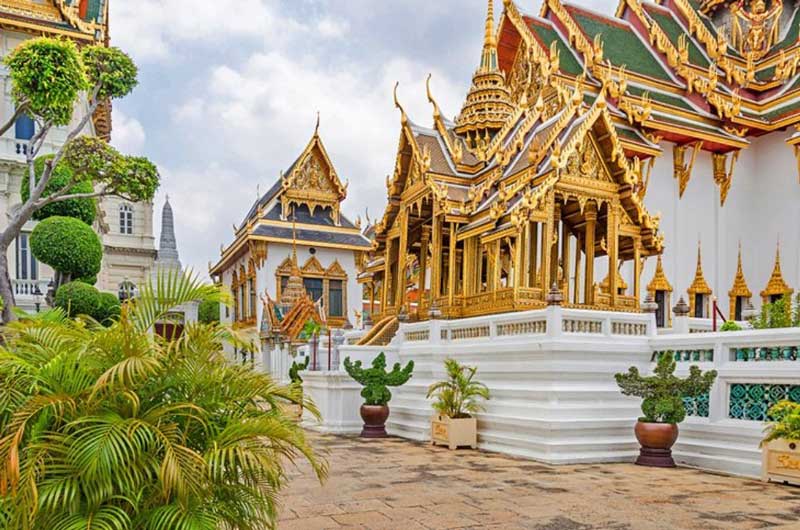
The Aphorn Phimok Prasat, the delicate golden wooden pavilion, adjacent to the Dusit Maha Prasat, was used by King Rama I for changing before entering the audience room and again after leaving. Drapes interlaced with gold thread were drawn around the pillars while the king used to don his ceremonial robes. The Dusit Maha Prasat, the inner hall located at the Grand Palace, was used by King Rama I as the audience room, where he used to take his seat on the niched throne set on the walls of the south wing.
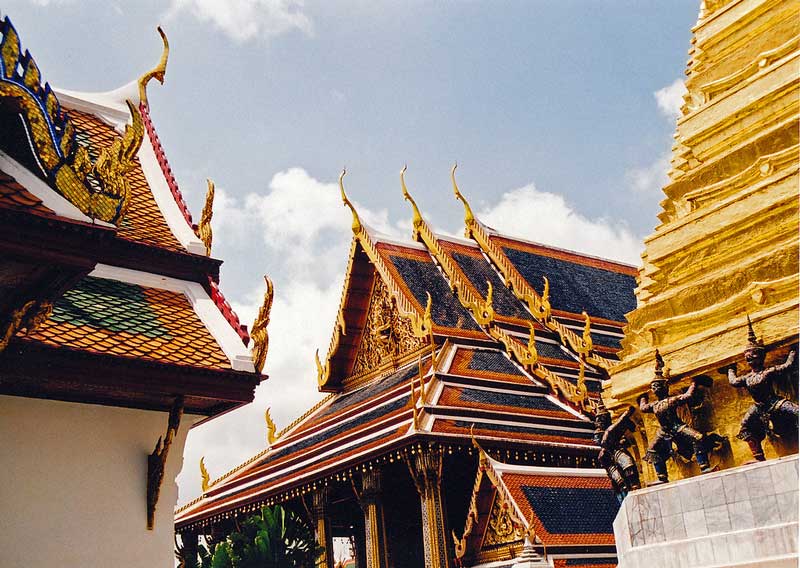
The Phra Thinang Amarin Winitcahi, the northernmost and forward building of the Maha Monthien buildings, was originally the Principal Audience Hall of the Middle Palace in which the officials of the state and the foreign ambassadors were received in audience. Constructed in Thai style, the large throne hall, with its roof covered in green and orange tiles, and the pediment decorated with a mural depicting Lord Indra, the king of the gods, the large throne hall stands on a 50cm high base. The grand hall is majestically decorated with two rows of square columns, five on the left and six on the right, adorned with Thai floral designs. The golden throne, known as the Bussabok Mala Maha Chakraphat Phiman Throne, shaped like a boat, and flanked by two gilded seven- tiered umbrellas, is located at the back of the hall, with a spired pavilion in the middle. The elevated pavilion represents Mount Meru or Sumeru, the sacred five-peaked mountain, the centre of the Hindu, Buddhist, and Jain cosmology.
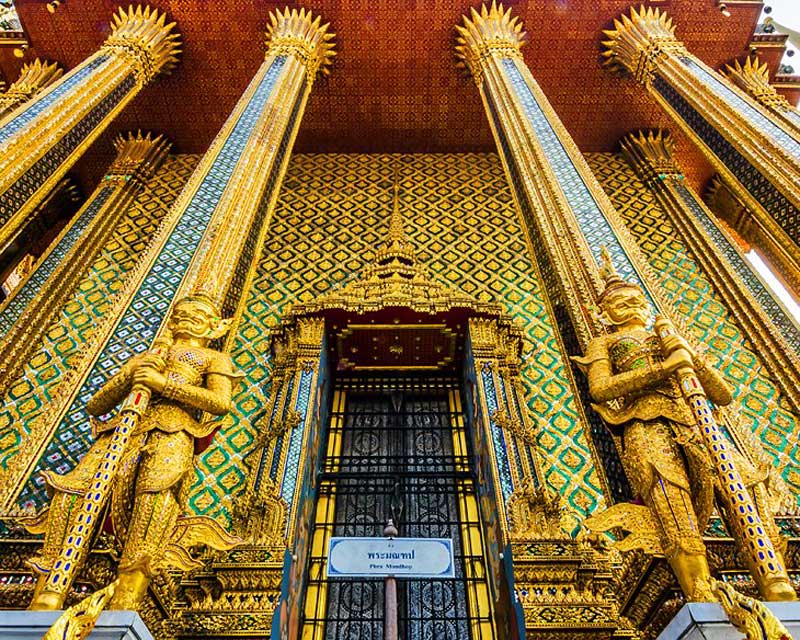
Another important building in the palace complex is the Phra Mondhop, located just behind the Phra Sri Ratana of the Grand Palace. Serving as the Palace library, the building is created with tiny green and gold mosaics, a gilt spire, and pure silver floors. Apart from several Buddhist publications and ancient literature, it contains the triple basket of the Tripitaka, the sacred books of the Buddhist scriptures, held in a mother-of-pearl lacquered black bookcase on a floor of silver.